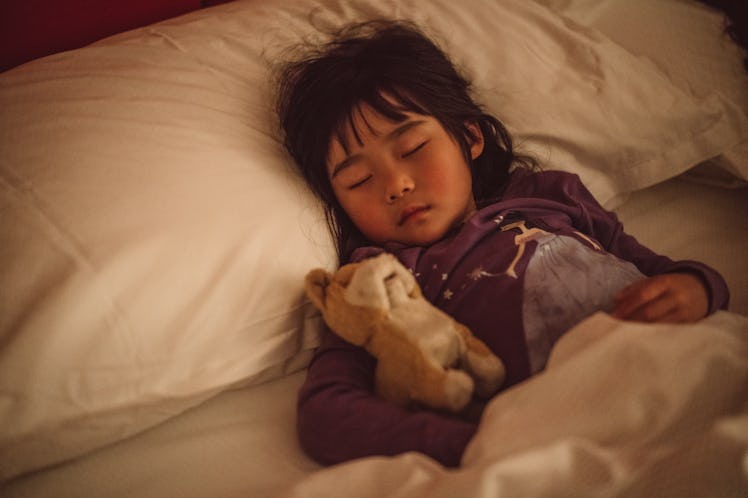Get Your Child To Bed Quickly With Progressive Muscle Relaxation For Kids
If you relax the body, you relax the mind, you get the kids to sleep.

“But I’m not tired!” Never have crueler words been spoken at bedtime. Sometimes your kid is just giving you a hard time, but other times they have real trouble falling asleep. No parent can tell the difference. This is why it’s important to keep to a regular nightly routine. One of the best, most effective last-resort techniques is progressive muscle relaxation for sleep. Therapists recommend progressive muscle relaxation (PMR) to both children and adults for better sleep.
Though it has a fancy name, PMR is easy to do. Tense targeted areas of the body, hold, then release. For example, clutch your hands into fists and squeeze as hard as you can, like you’re trying to squeeze all the juice out of a lemon, then let go. Work your way through the rest of your body doing the same thing until all your muscles are loose.
The idea behind progressive muscle relaxation is that when your body is relaxed, so is your mind. It’s hard to have anxious energy in your brain when there’s none in your body. But you can’t release all your tension at once, which is why PMR takes it one body part at a time. A progressive muscle relaxation session can take anywhere from 10 to 30 minutes depending on how long you squeeze each muscle area.
Progressive muscle relaxation not only helps with sleep, but also with anxiety. One study found that after using PMR for just three days, burn survivors had lower anxiety levels and better sleep quality. So start practicing progressive muscle relaxation with your kid before bedtime, ideally with the lights out and when your child is already in bed. Once they have the technique down, they can use their favorite moves whenever they’re stressed for a bit of relief.
Progressive Muscle Relaxation Script for First-Timers
Before kids learn first-hand that progressive muscle relaxation makes them feel better, entertaining prompts can keep them happy and engaged. This script from the Focus Project, an organization that trains military children to build resilience, will activate their imagination while relaxing their muscles (You can find the whole thing here.)
“Now think about your legs. You are in line to get on a big/huge rollercoaster at the amusement park. You need to stand up as tall as you possibly can to be able to ride the rollercoaster. Here comes the lady to measure you and she needs to see if you can get on the ride. Stretch your legs as long as possible. Make your legs super long. Stretch, stretch, stretch. You are almost tall enough, but not quite there. The lady walked away. Just Relax.
Wait, the lady will give you another chance. She’s going to re-measure you. Stand as tall as possible and stretch your legs. Keep stretching. Make your legs super long. Stretch. Keep stretching. Make them long. And relax.”
Progressive Muscle Relaxation Script for Young Kids
This script, published by the University of Washington, is designed specifically for young children. The instructions are fun and easy to follow and not too long that your kid will want to quit halfway through. (You can find the whole thing here.)
“Here comes a pesky old fly. He has landed on your nose. Try to get him off without using your hands. That’s right, wrinkle up your nose. Make as many wrinkles in your nose as you can. Scrunch your nose up real hard. Good. You’ve chased him away. Now you can relax your nose. Oops here he comes back again. Repeat.”
Progressive Muscle Relaxation for Teens
Teenagers may prefer to try progressive muscle relaxation alone, but having someone walk you through the process is essential for beginners. There are plenty of scripted sessions on YouTube that teens can search for. Clocking in at about 15 minutes, this video, which also serves as a guided meditation, is incredibly calming. You can find it here.
This article was originally published on